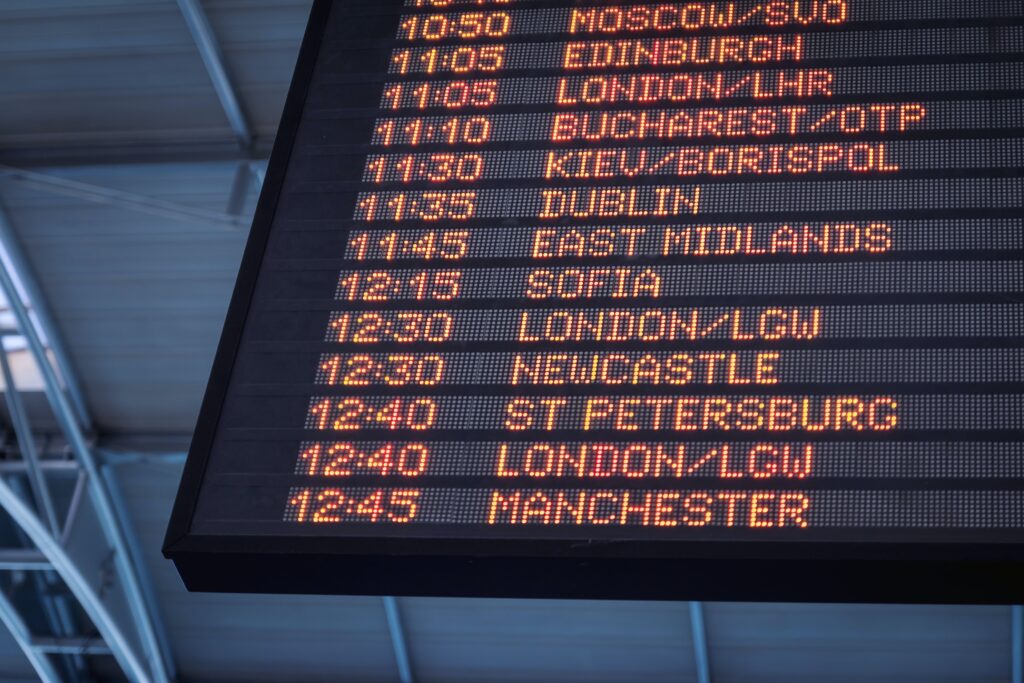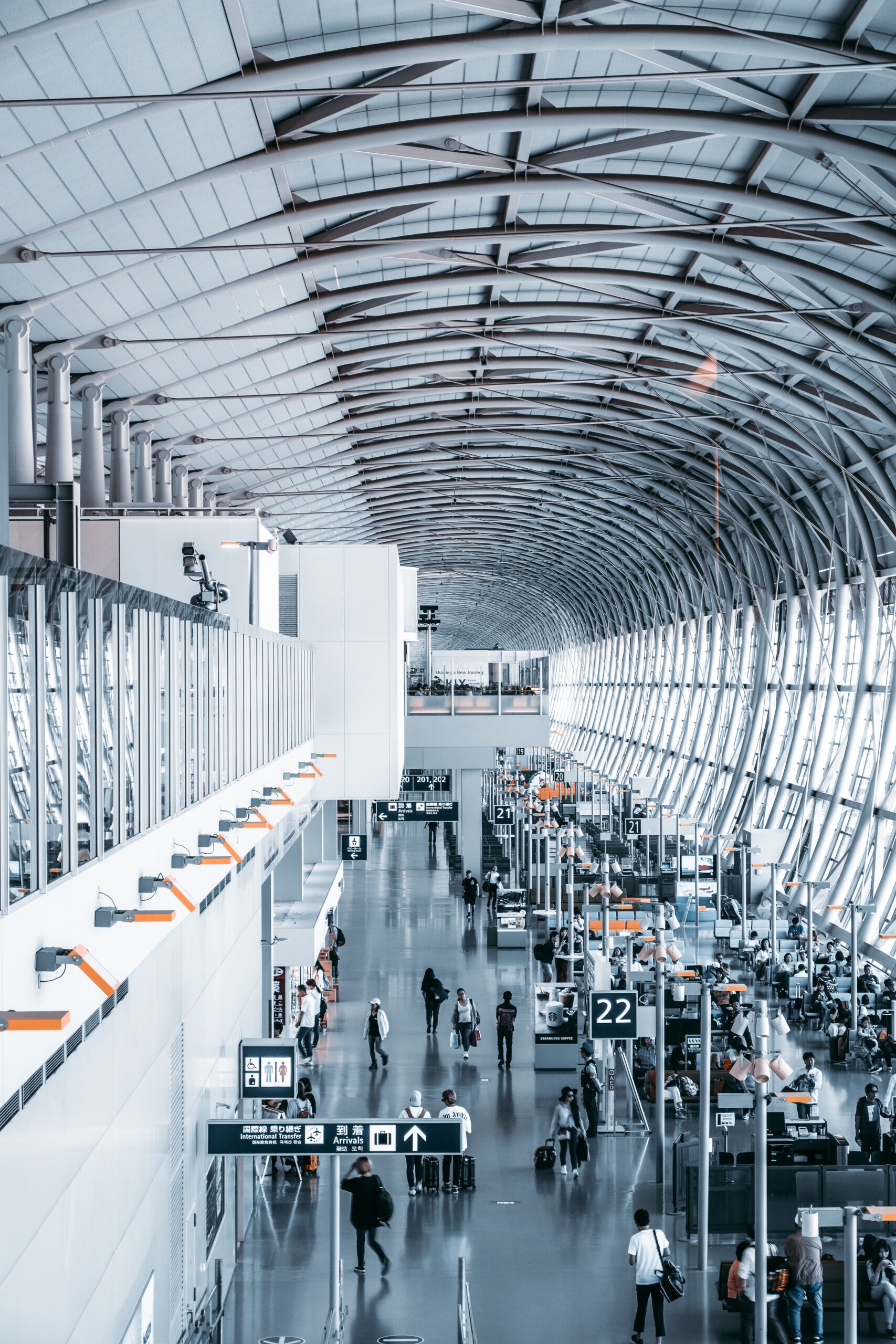Ecuador Transportation Guide
Ecuador Transportation Guide: Transportation includes buses, taxis, and domestic flights. Check safety records, negotiate taxi fares, and explore diverse landscapes comfortably.


Ecuador Transportation Guide – International Airports
Ecuador has several international airports, including:
Mariscal Sucre International Airport in Quito (UIO): This is the busiest airport in Ecuador, located in the capital city of Quito. It serves as a hub for the national airline, TAME, and several international airlines.
Jose Joaquin de Olmedo International Airport in Guayaquil (GYE): This airport is located in the city of Guayaquil, the largest city in Ecuador. It serves as a hub for the national airline, Avianca Ecuador, and several other international airlines.
Eloy Alfaro International Airport in Manta (MEC): This airport is located in the coastal city of Manta and serves as a gateway to the Pacific coast of Ecuador.
Seymour Airport in the Galapagos Islands (GPS): This airport is located on the island of Baltra in the Galapagos Islands and serves as the main point of entry for tourists visiting the islands.
General Ulpiano Paez Airport in Salinas (SNC): This airport is located in the beach town of Salinas on the Pacific coast and serves as a popular destination for tourists visiting the coast of Ecuador.
There are also several smaller airports throughout the country that offer domestic flights within Ecuador.
National Airports
In addition to the international airports, Ecuador has several national airports that serve domestic flights within the country. Some of the most important national airports in Ecuador are:
Tarapoa Airport (TPC): Located in the province of Sucumbios, this airport serves as a gateway to the Amazon rainforest in the northeast of Ecuador.
Lago Agrio Airport (LGQ): Located in the province of Sucumbios, this airport serves as a hub for flights to the Amazon region of Ecuador.
Francisco de Orellana Airport (OCC): Located in the province of Orellana, this airport also serves the Amazon region of Ecuador.
Cotopaxi International Airport (LTX): Located in the province of Cotopaxi, this airport serves the central region of Ecuador.
Santa Rosa International Airport (ETR): Located in the province of El Oro, this airport serves the southern region of Ecuador.
Loja Airport (LOH): Located in the province of Loja, this airport serves the southern region of Ecuador and is a gateway to the Podocarpus National Park.
Cuenca International Airport (CUE): Located in the province of Azuay, this airport serves the southern region of Ecuador and is a popular destination for tourists visiting the colonial city of Cuenca.
Coronel Carlos Concha Torres Airport (TUA): Located in the province of Esmeraldas, this airport serves the northern region of Ecuador and is a popular destination for tourists visiting the beaches of Atacames and Tonsupa.
Ecuador Transportation Guide – Trains
Ecuador has a few train routes that offer scenic views of the countryside and access to different regions of the country. The most famous train route in Ecuador is:
Tren Crucero: This is a luxury train that travels from Quito to Guayaquil or vice versa, crossing the Andes Mountains, the coastal plains, and the tropical forests of Ecuador. The train stops in several towns and villages along the way, where passengers can explore the local culture and traditions. The journey takes four days and three nights, and it is a popular tourist attraction.
Other train routes in Ecuador include:
Nariz del Diablo (Devil’s Nose): This is a historic train route that starts in the town of Alausi and goes down the steep slopes of the Andes Mountains, passing through the famous Devil’s Nose rock formation. The train stops in the town of Sibambe, where passengers can visit a local museum and learn about the history of the railway in Ecuador.
Tren de la Libertad: This is a train route that travels from Ibarra to Salinas, crossing the northern Andes and the Chota Valley, an area known for its Afro-Ecuadorian culture and music. The train stops in several towns and villages along the way, where passengers can enjoy local cuisine and music.
Tren de la Dulzura: This is a train route that travels from Duran to Yaguachi, crossing the coastal plains and the banana plantations of Ecuador. The train stops in several towns and villages along the way, where passengers can taste local sweets and fruits.
These train routes are not only a means of transportation but also a cultural experience that allows visitors to explore the beauty and diversity of Ecuador.


Ecuador Transportation Guide – Buses
Buses are the most common and affordable mode of transportation in Ecuador. The country has an extensive network of intercity and local buses that connect all major cities and towns. The buses range from basic to luxury, and their quality and comfort vary depending on the route and the company.
Most intercity buses in Ecuador are operated by private companies, and they offer different classes of service, such as:
Económico (Economy): This is the basic class of service, which is usually a small bus or minivan with no air conditioning or restroom. It is the cheapest option, but it can be uncomfortable for long journeys.
Semi-cama (Semi-bed): This is a higher class of service, which includes reclining seats, air conditioning, and sometimes a restroom. It is more comfortable than economy class but still affordable.
Cama (Bed): This is the highest class of service, which includes fully reclining seats, air conditioning, a restroom, and sometimes food and beverages. It is the most comfortable and expensive option.
Local buses in Ecuador are usually smaller and cheaper than intercity buses, and they operate within cities and towns. They have fixed routes and stops, and they are often crowded and noisy.
Links of interest
Airlines:
TAME Airlines: TAME Airlines Website
LATAM Airlines Ecuador: LATAM Airlines Ecuador Website
Avianca Ecuador: Avianca Ecuador Website
Emirates (for international flights): Emirates Ecuador Website
Ride-Sharing:
Cabify: Cabify Ecuador
Easy Taxi: Easy Taxi Ecuador
Beat: Beat Ecuador


We recommend
Ecuador travel tips
Our guide offers essential Ecuador travel tips and insights for an unforgettable journey. Plan your trip with us!
Ecuador Transportation Guide – SIM Cards
When visiting Ecuador, obtaining a local SIM card is a convenient way to stay connected. Here are some tips:
Providers:
Major providers include Claro, Movistar, and CNT. Visit their official stores or authorized resellers.
Registration:
Register your SIM card with your passport. This is a legal requirement in Ecuador.
Top-Up Options:
Recharge your prepaid SIM card with top-up vouchers, available at kiosks and convenience stores.
Data Plans:
Choose a data plan that suits your needs. Providers offer various packages for calls, texts, and data.
Internet Settings:
Configure your phone’s internet settings. Providers can assist or provide instructions upon purchase.
Wi-Fi Availability:
Wi-Fi is prevalent in urban areas. A local SIM ensures connectivity in remote regions and during travel.
Emergency Services:
Familiarize yourself with local emergency numbers and services in Ecuador.
Unlocking Your Phone:
Ensure your phone is unlocked before arriving in Ecuador to use a local SIM card.
Coverage:
Check the coverage map of your chosen provider, especially if you plan to explore remote areas.
Vendor Locations:
Purchase SIM cards from official stores or authorized resellers to ensure authenticity.
By following these tips, you can easily acquire and use a local SIM card in Ecuador, ensuring seamless communication during your travels.
Currency Converter
Currency Converter EUR/USD: Fri, 6 Jun.
Unit Converter
Ecuador Transportation Guide – Maps
What map do you need?
Choose your destination
More information about this country







